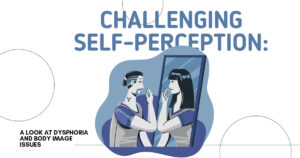Many of us barely notice everyday sounds, textures, lights, and movements, which can feel overwhelming, even distressing, to someone with sensory processing disorder (SPD). Whether it’s the hum of a refrigerator, the scratch of a clothing tag, or the chaos of a crowded hallway, these sensory inputs can lead to confusion, frustration, and emotional meltdowns.
SPD is more than just “sensitivity.” It’s a neurological condition that affects how the brain processes and responds to sensory information. From childhood through adulthood, those with SPD often face significant challenges in their daily lives—but with awareness and support, they can thrive.
Understanding Sensory Processing Disorder
Sensory processing disorder occurs when the brain struggles to organize and respond appropriately to input from the senses—touch, sound, sight, taste, smell, and movement. Individuals with SPD might be overly sensitive to sensory stimuli, under-responsive, or crave certain sensations.
There are three broad patterns of SPD:
| Sensory Response Type | Description | Examples |
| Sensory Sensitivity | Overreaction to sensory input, often leading to discomfort or distress | Reacting strongly to loud sounds, bright lights, or itchy fabrics |
| Sensory Seeking | Craving intense or constant sensory stimulation to stay regulated | Spinning, jumping, touching everything, crashing into furniture |
| Sensory Avoiding | Actively withdrawing from or resisting overwhelming sensory experiences | Covering ears, refusing to wear certain clothes, and avoiding crowds |
Mental Health Center of San Diego
Symptoms and Indicators of Sensory Processing Disorder
The signs of SPD vary widely from person to person. Some children may be hyperactive and constantly moving, while others appear withdrawn or fearful in loud or busy environments.
Common symptoms include:
- Covering ears in response to normal sounds
- Avoiding messy play or certain textures
- Struggling with clothing tags, seams, or bright lights
- Meltdowns during routine transitions (like brushing hair or teeth)
- Difficulty focusing in noisy classrooms
- Constant movement or rough play beyond what’s typical for their age
- Avoiding crowded places due to sensory overload

The Role of Sensory Integration in Managing SPD
Sensory integration refers to the brain’s ability to take in, organize, and respond to information from the environment. In individuals with SPD, this process is disrupted.
Sensory integration therapy, often led by an occupational therapist, aims to:
- Improve the nervous system’s ability to regulate sensory input
- Strengthen coordination and balance
- Help individuals become more comfortable with various sensory experiences
- Enhance self-regulation and reduce sensory overload
Differentiating Sensory Sensitivity and Sensory Overload
While related, sensory sensitivity and sensory overload are not the same. Sensory sensitivity is the heightened awareness or aversion to stimuli, while sensory overload is the physical and emotional response to too much input at once.
Let’s break it down in a comparison table:
| Term | Definition | Example |
| Sensory Sensitivity | An exaggerated response to everyday sensory experiences | A child becomes upset by the sound of a vacuum cleaner |
| Sensory Overload | A state of overwhelm when too many stimuli are experienced at once | A person shuts down during a busy grocery store visit |
Occupational Therapy Approaches for Sensory Challenges

Occupational therapy (OT) is one of the most effective ways to support individuals with SPD. A trained OT evaluates a person’s sensory profile and designs interventions that promote adaptive responses to sensory input.
Some common OT techniques include:
- Personalized daily routines incorporating activities like swinging, squeezing, or jumping
- For calming, deep pressure stimulation
- Specific touch-based techniques to desensitize the nervous system
- Gradually introducing challenging textures or sounds in a safe environment
- To improve proprioception (sense of body in space)
Mental Health Center of San Diego
Exploring Sensory Seeking Behaviors
Some children with SPD are not overwhelmed by sensation—they actively seek it out. These behaviors may appear energetic or disruptive but are often attempts to regulate the nervous system.
Sensory seeking behaviors can include:
- Constant movement (rocking, jumping, spinning)
- Touching everything in sight
- Making loud noises or humming
- Bumping into people or furniture
- Preference for tight hugs or rough play
Addressing Sensory Avoidance in Daily Life
Just as some seek more input, others work hard to avoid it. Sensory avoidance can lead to resistance, meltdowns, or withdrawal from certain activities.
Common sensory avoidance behaviors include:
- Refusing to wear certain clothes due to texture
- Avoiding finger foods or messy play
- Fleeing loud environments or covering ears
- Refusing to participate in gym class or recess
To support sensory avoidant individuals:
- Respect their boundaries and provide alternatives
- Introduce new stimuli gradually (e.g., touch foam before using it)
- Use tools like noise-canceling headphones or compression shirts
- Create sensory-safe zones at home or in classrooms
Effective Strategies for Sensory Modulation
Sensory modulation is the ability to regulate responses to sensory input. Some individuals with SPD may swing between seeking and avoiding, depending on the setting or their internal state.
Helpful strategies for improving modulation include:
- Predictable routines, which reduce anxiety and overstimulation
- Calming sensory input, like soft music, fidget toys, or dim lighting
- Energy-releasing activities before challenging transitions
- Mindfulness practices, adapted for sensory needs (like deep breathing with visuals)
- Visual schedules and timers to provide structure and reduce sensory surprises
Navigate Sensory Challenges with Confidence—Find Support at Mental Health Center of San Diego
Living with sensory processing disorder is challenging, but no one has to face it alone. At Mental Health Center of San Diego, we offer integrated care to support individuals and families navigating sensory challenges with compassion and expertise.
Contact Mental Health Center of San Diego today to learn how we can help your family build a more sensory-friendly life—one step at a time.
Mental Health Center of San Diego
FAQs
- What are the most effective strategies for managing sensory overload in individuals with sensory processing disorder?
Creating calm environments, offering sensory breaks, using tools like headphones or weighted blankets, and implementing a consistent routine can help manage sensory overload. These strategies support nervous system regulation and reduce stress.
- How can occupational therapy approaches help address sensory challenges in children with sensory integration issues?
Occupational therapy provides structured sensory experiences to help children better process input. Activities like swinging, brushing, and deep-pressure stimulation promote regulation and skill-building.
- What are the differences between sensory seeking and sensory avoidance behaviors in sensory processing disorder?
Sensory seekers crave intense input like movement or pressure, while sensory avoiders try to minimize overwhelming sensations like noise or touch. Both are attempts to self-regulate but require different support strategies.
- How is sensory modulation critical for individuals experiencing sensory sensitivity?
Sensory modulation helps individuals manage their responses to sensory input, preventing extremes of overreaction or underreaction. It supports better emotional regulation and daily functioning.
- What role does sensory integration play in managing everyday sensory challenges for those with sensory processing disorder?
Sensory integration helps the brain organize and respond to input more effectively. Improving this process through therapy enhances comfort, focus, and adaptability in everyday environments.









